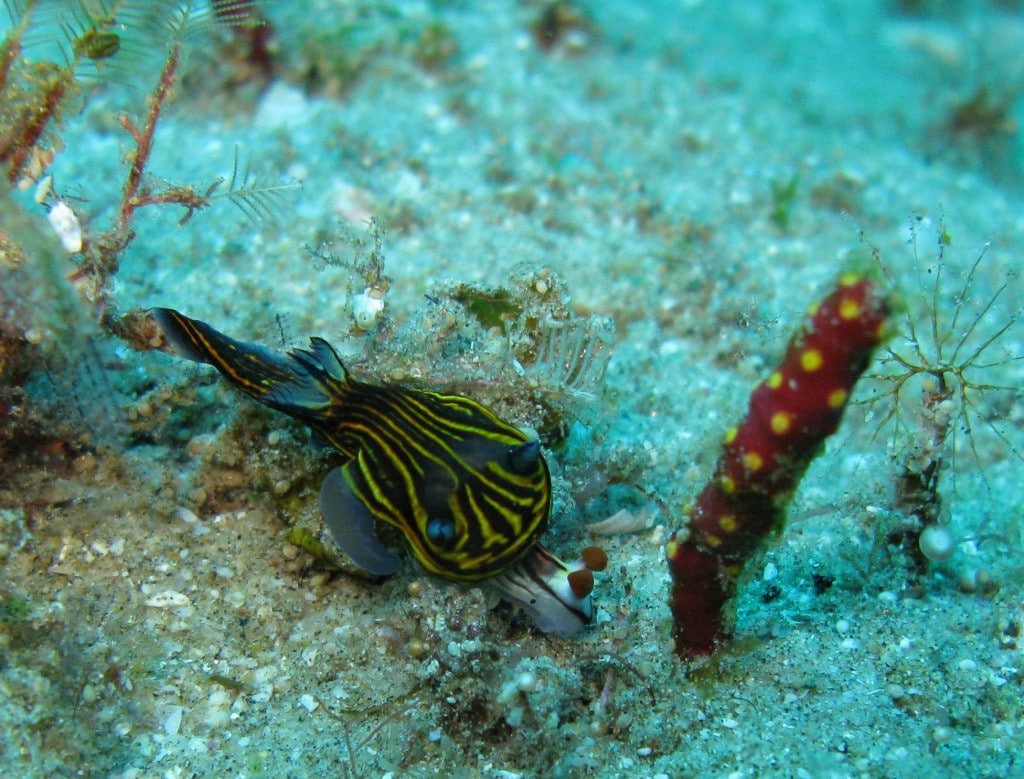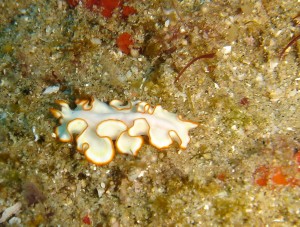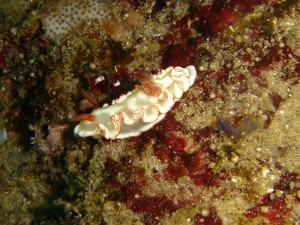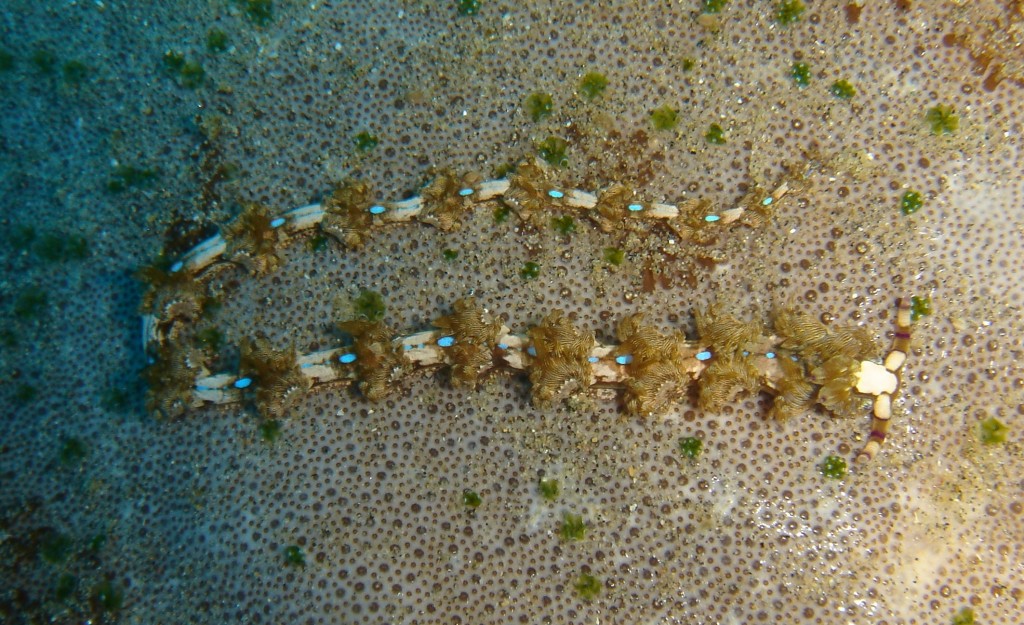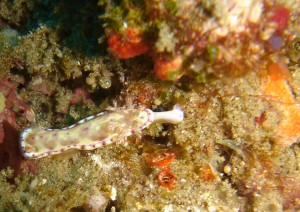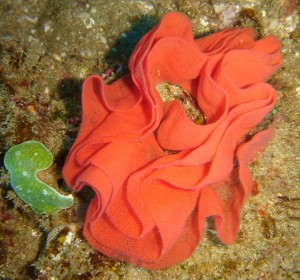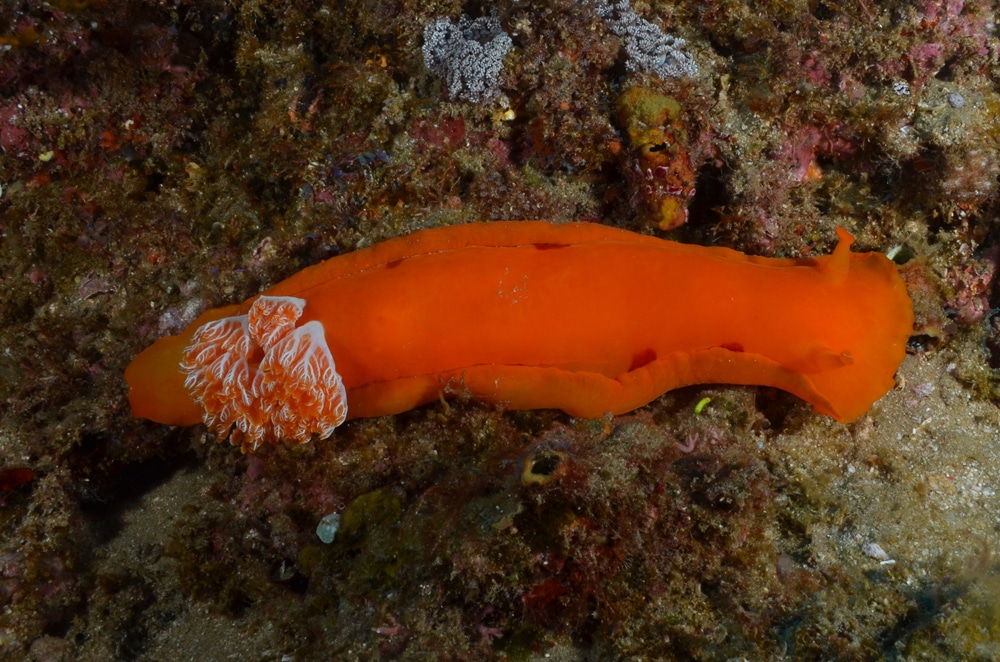News
Nudibranchs and the fabulous Spanish Dancer (Hexabranchus sanguineus)
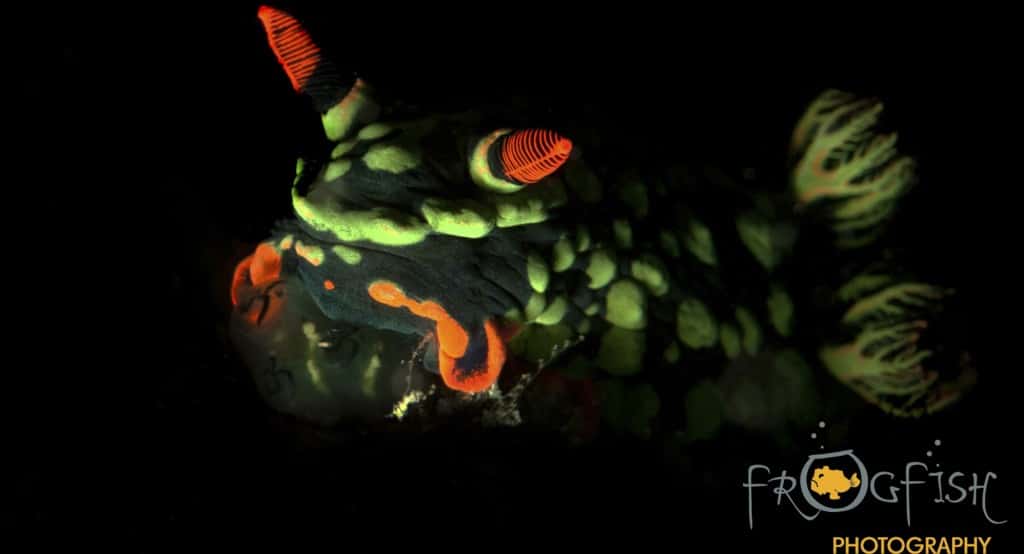
Every good Dive Master/photographer has a problem. They must look after their clients while still taking pictures. They have no time to vary the depth of focus, no time to change camera settings; their dive clients must always come first. Colin Ogden of Amoray Diving at Sodwana Bay solved the problem by shooting nudibranchs, and his study of these amazing creatures has become a passion. I spent a spellbinding evening with him learning about them.
Nudibranchs come in brilliant colours, with fabulous markings, and they can vary in size from 1mm to 600mm. They are primarily carnivores and will eat hydroids and other species of nudibranchs but most of them feed on sponges; all of which are animals. A few will eat algae or seaweed. They feed where food is available so they frequent areas where coral growth is limited; even the cold Northern European waters harbour these colourful sea slugs and nudibranch hunting has become a global passion.
Nudibranch means exposed gills. Hexabranchus, for example, has six sets of exposed gills. All but two nudibranchs are called by their Latin names. The scientific community frowns on them being given common names so the study of these creatures is not for the faint-hearted.
Most of them breath using the exposed bunches of gills on their backs, and their sensual organs are contained in a pair of rhinophores, on the front of their heads. These look like horns. All are hermaphrodite, with both male and female sex organs, which are always on the right hand side, below the neck. These can be expelled to accommodate a large meal, and then re-ingested. All of them are poisonous to fish, and a single nudibranch can kill an entire aquarium full of fish if it becomes stressed and lets off a toxin. This occasionally benefits the palatable flatworm. He sometimes mimics the shape and rhinophores of the poisonous nudibranch, escaping predators and protecting himself.
There is even a species that farms algae in its gills. It is long and thin and has many sets of gills or cerata which he uses to collect algae. You will sometimes find it spread out along the top of the reef on a sunny day, cerata exposed to catch the sun so the algae will grow faster.
The spectacular Spanish Dancer (Hexabranchus sanguineus) is one of the very few nudibranchs that goes by its common name. They grow up to 600mm long, so are clearly identifiable. “They are nocturnal animals in our waters, so we rarely spot them in Sodwana Bay. However, we found two on the point of mating on Seven Mile in broad daylight. They lined up neck to neck, and then they exchanged sperm, fertilising each other. After five or six days each lays a long egg ribbon in a continuous circle, and you can see these on the reef looking like soft rosettes.”
They are normally pink, reddish or orange. These ribbons are preyed upon by other nudibranchs of the Favourinus family and the survivors hatch into tiny nudibranchs that look nothing like their imposing parents.
Other species lay egg ribbons that hatch into tiny veligers, which are a larval stage, and they can float around in the ocean, following currents for months on end. When they sense that there is a food source, they will descend onto the reef and metamorphose into small nudibranchs. The study of these creatures is still in its infancy, although some were described as early as the 1700s, but they are fascinating creatures, and there are still many unnamed and quite rare species in our waters. Once you know what you are looking for, you can find them almost everywhere.
Words: Jill Holloway
Pictures and technical data: Colin Ogden, Amoray Diving
Copyright Ocean Spirit 2017 – www.osdiving.com
Marine Life & Conservation Blogs
Book Review: Shells of the World

Shells of the World: A Natural History by M.G. Harasewych
Shells of the world is a guide to the world of marine, shelled molluscs. And what a varied and interesting world it is. Some of my favourite things to find on a dive are detailed in this book, including disco clams (or Electric File Clams as they are correctly names), the cephalopods, giant clams and sea hares. There are also many on my wish list, top of which is the Nautilus.
Each chapter provides a detailed description of the species, along with beautiful images. You can dive deeper and discover where they live, both with global distribution and the habitat they prefer. Learn about their diet, reproduction and diversity.
Having dipped in and out of this lovely book over the past few weeks, it has inspired me to learn more about this group of animals that we see on most divers, wherever we are in the world. Some of the shells are incredibly intricate and beautiful. I have always agreed with never collecting, or touching, marine life. The description of a certain set of cone shells should be a warning to those that are happy to pick up marine life! One of the cone shells has a local name called the cigarette snail. Why? Because once the venom is in your system from this animal, you only have time to smoke one cigarette before the affects of the venom are fatal!
What the publisher says:
Mollusks are invertebrate animals with a remarkable natural history and a rich fossil record, and their shells are prized for their breathtaking variety and exquisite beauty. Shells of the World provides a wide-ranging look at the incredible diversity of marine mollusks. An informative introduction outlines the lineages covered, followed by a directory section, split into classes, that profiles a broad selection of different taxa to give a sense of their sheer numbers and variety.
- Features hundreds of beautiful color photos, depicting both the live animals and their shells
- Discusses mollusk evolution, anatomy, life cycles, behavior, and ecology
- Describes unique characteristics, distribution, habitat, and size
- Provides valuable insights into the conservation of the world’s marine mollusks
- Ideal for malacologists and shell collectors everywhere
About the Author:
M. G. Harasewych is research zoologist emeritus and former curator in the Department of Invertebrate Zoology at the Smithsonian Institution’s National Museum of Natural History. A fellow of the American Association for the Advancement of Science, he is the author (with Fabio Moretzsohn) of The Book of Shells: A Life-Size Guide to Identifying and Classifying Six Hundred Seashells.
Book Details
Publisher: Princeton University Press
Hardcover
Price: £25
ISBN: 9780691248271
Published: 9th April, 2024
Gear News
Go anywhere with Stahlsac
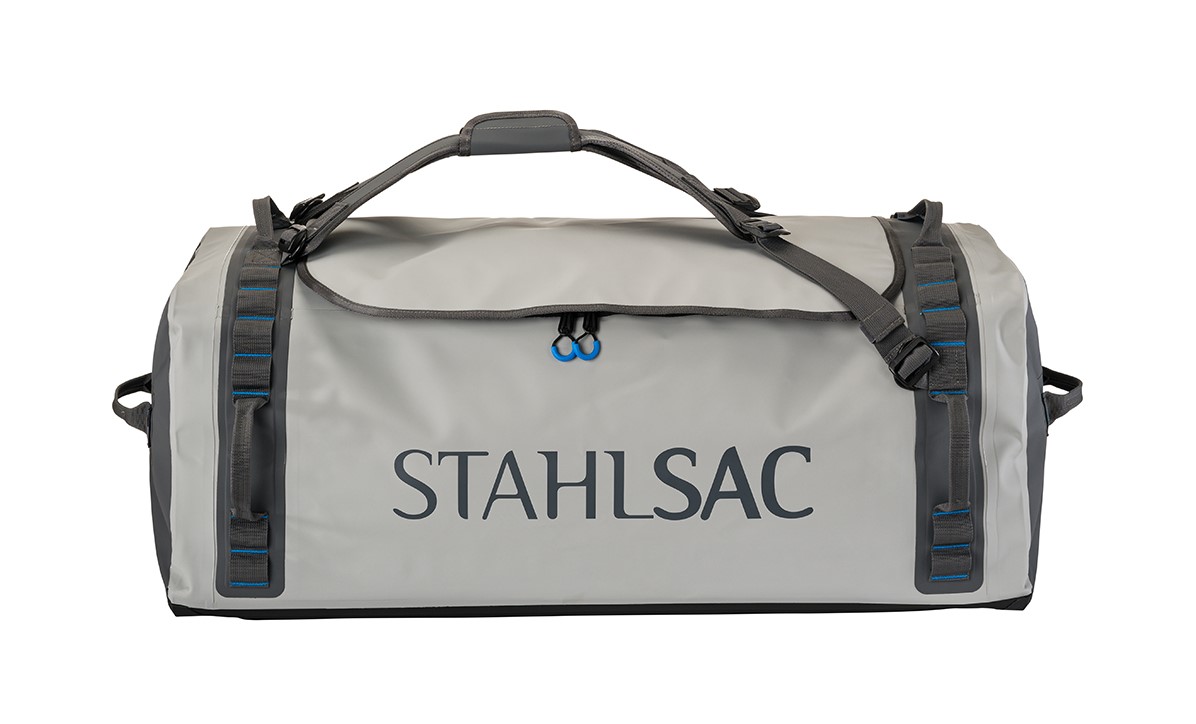
Stahlsac dive bags and travel luggage are built for our community of divers, surfers, kayakers and outdoor explorers who need bags that are constructed with durability, toughness, and 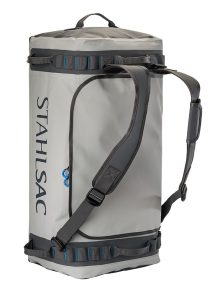 the highest quality the industry has ever seen. We were founded by one man determined to build better watersports and dive bags, and today, that mission is carried on by many. Adventure doesn’t just present itself; it requires discovery. When we design dive bags, we make sure they are tough enough for you to explore in all conditions—warm and cold, wet and dry—to the nearest and farthest reaches of the earth. And for those times you want to push the boundaries of adventure, Stahlsac dive bags make sure you can truly GO ANYWHERE.
the highest quality the industry has ever seen. We were founded by one man determined to build better watersports and dive bags, and today, that mission is carried on by many. Adventure doesn’t just present itself; it requires discovery. When we design dive bags, we make sure they are tough enough for you to explore in all conditions—warm and cold, wet and dry—to the nearest and farthest reaches of the earth. And for those times you want to push the boundaries of adventure, Stahlsac dive bags make sure you can truly GO ANYWHERE.
Abyss Duffels
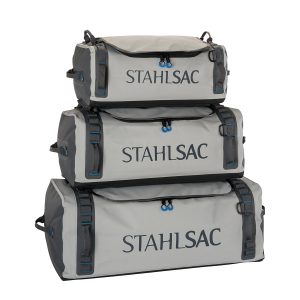 Made to be your partner-in-crime on every adventure, Stahlsac’s Abyss Duffels protects your gear from Mother Nature’s worst. Tough and 100% waterproof with double-TPU nylon material that shrugs off daily wear-and-tear, and RF-welded seams further boost the bag’s potential for lifelong exploring. Get Wet. Get Lost. Go Anywhere with Abyss.
Made to be your partner-in-crime on every adventure, Stahlsac’s Abyss Duffels protects your gear from Mother Nature’s worst. Tough and 100% waterproof with double-TPU nylon material that shrugs off daily wear-and-tear, and RF-welded seams further boost the bag’s potential for lifelong exploring. Get Wet. Get Lost. Go Anywhere with Abyss.
- A weatherproof duffel for trips, travel, and adventure
- Ultra-durable double-TPU nylon protects your gear
- Material repels water and keeps your equipment dry
- RF-welded seams are flush, tough, and waterproof
- Removable straps transform duffel into backpack
- Zippered internal stow compartments carry essentials
- External zippered flap is easy to open and close
- Welded external handles make transporting a breeze
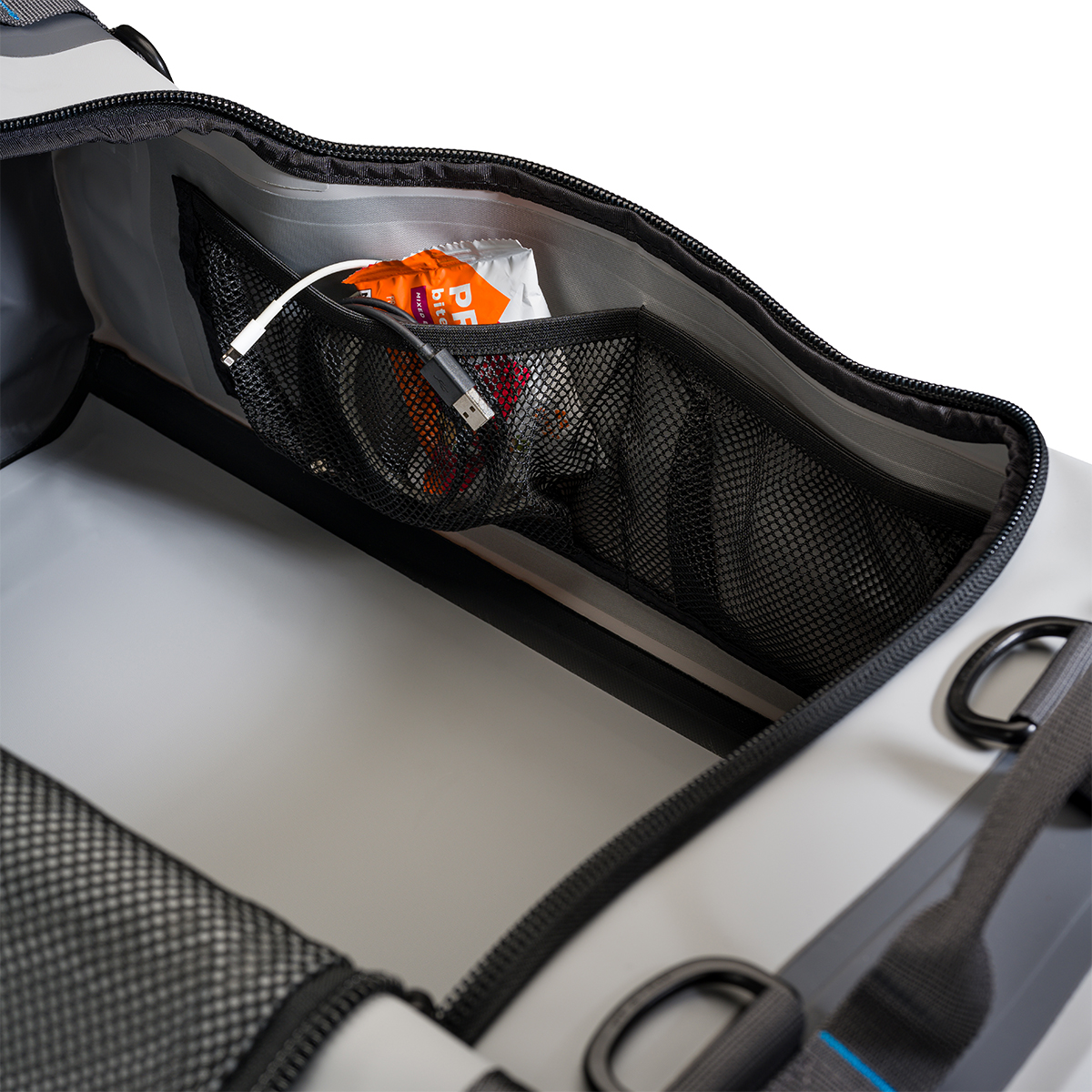
Panama Mesh Backpack
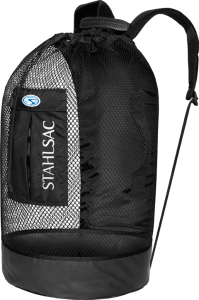 The most copied design in scuba diving, the Stahlsac Panama Mesh Backpack is the “original” design and features two high-density foam padded shoulder straps, extra durable polyester mesh, duffel bag handles and our unique zippered dry pocket inside that combines with a wet pocket outside. The bottom’s built from reinforced 18-gauge PVC nylon to combat the wear and tear of your active coastal lifestyle, and, as a bonus in every bag, we supply a 12″ x 12″ mesh drawstring satchel for extra stowing utility. Pack up your beach kit and go.
The most copied design in scuba diving, the Stahlsac Panama Mesh Backpack is the “original” design and features two high-density foam padded shoulder straps, extra durable polyester mesh, duffel bag handles and our unique zippered dry pocket inside that combines with a wet pocket outside. The bottom’s built from reinforced 18-gauge PVC nylon to combat the wear and tear of your active coastal lifestyle, and, as a bonus in every bag, we supply a 12″ x 12″ mesh drawstring satchel for extra stowing utility. Pack up your beach kit and go.
- Density foam padded shoulder straps
- Outside wet/dry pockets
- 2 Carry handles
- Tough, snag-resistant polyester mesh
- Reinforced PVC bottom
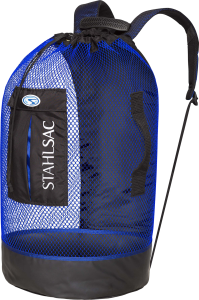
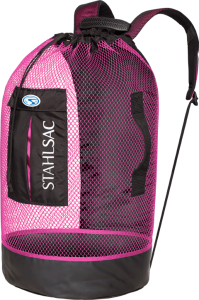
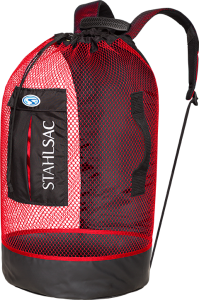
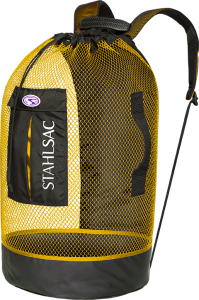
For more information about Stahlsac bags, visit www.stahlsac.com/dive-bags.
Sea & Sea is the home of Stahlsac and other leading diving brands in the UK.
-

 News3 months ago
News3 months agoCapturing Critters in Lembeh Underwater Photography Workshop 2024: Event Roundup
-

 Marine Life & Conservation Blogs3 months ago
Marine Life & Conservation Blogs3 months agoCreature Feature: Swell Sharks
-

 Gear Reviews4 weeks ago
Gear Reviews4 weeks agoGEAR REVIEW – Revolutionising Diving Comfort: The Sharkskin T2 Chillproof Suit
-

 Blogs2 months ago
Blogs2 months agoMurex Resorts: Passport to Paradise!
-

 Blogs3 months ago
Blogs3 months agoDiver Discovering Whale Skeletons Beneath Ice Judged World’s Best Underwater Photograph
-

 News3 months ago
News3 months agoPADI Teams Up with Wellness Brand Neuro to Drive Ocean Change and Create a Blue State of Mind
-

 Gear Reviews3 months ago
Gear Reviews3 months agoGear Review: Oceanic+ Dive Housing for iPhone
-

 Marine Life & Conservation2 months ago
Marine Life & Conservation2 months agoSave the Manatee Club launches brand new webcams at Silver Springs State Park, Florida


